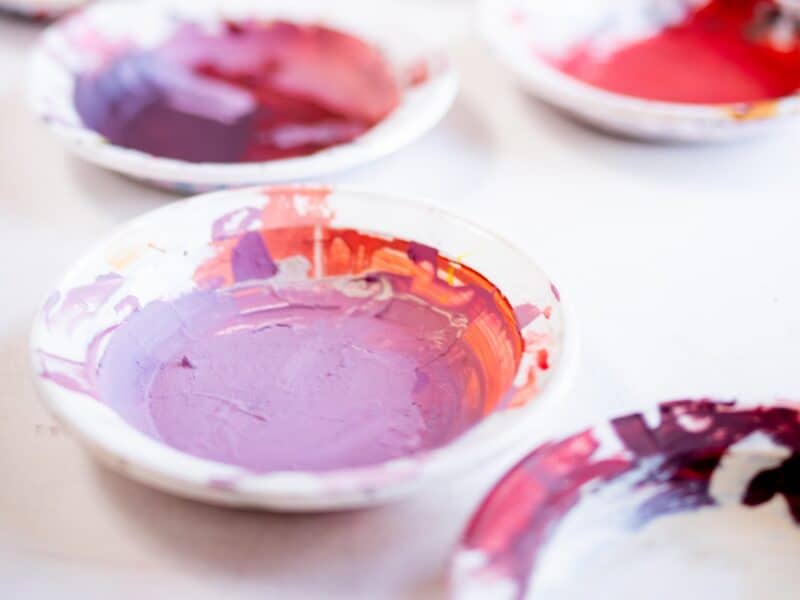
You can use specialist painting techniques to add texture to a finished wall of surface. These techniques also help to hide flaws in the painted surface.
Sponging
Materials
- wall paint in two or more colours
- painter’s tape (for masking off woodwork)
- disposable gloves
- natural sea sponges with medium to heavy textures
- strip of stiff, thin cardboard
- paper plates (for blotting)
Method
- Using one paint colour, apply your base coat and allow to dry.
- Dampen the sponges then wring them as dry as possible. Dip a sponge into your contrast colour and then dab onto a paper plate to remove excess.
- Gently press against the wall and lift. Continue in a random pattern. As you get to the corners use the cardboard to protect the adjoining wall.
- Add additional colours if you want to, starting with the darkest colour and working to the lightest.
Crackle
- Apply a flat base coat and allow to dry for at least 4 hours.
- Apply an even coat of Crackle liberally to the surface using a brush or a roller.
- Allow Crackle to dry a minimum of 1 hour, no longer than 7 days.
- Apply the top-coat using a brush or a roller using as few strokes as possible. For small cracks, apply a thin amount of the top-coat. For larger cracks, apply a heavier amount of the top-coat. The method used for applying the top-coat will affect the final look of the Crackle.
- Allow to dry for 24 hours.
Frottage
- Mix 1 part paint with 4 parts glaze. Stir until colour is consistent.
- Pour into a tray.
- Cut plastic sheeting into 3″ x 3″ squares and then crumple.
- Load a roller with the glaze colour, removing excess glaze material by rolling off the ribbed area of the paint tray.
- Starting at the top corner of the wall, roll a thin, even coat of the glaze colour onto a 3″ x 3″ section, cutting in with a brush when necessary.
- Open the plastic sheet and lay it over the wet glaze colour. Using a dry brush, roller, or cloth, lightly smooth the plastic against the surface. Leave the plastic sheet in place.
- Roll the glaze colour onto the next 3″ x 3″ section, overlapping the edge of the previous section.
- Apply another sheet of plastic, overlapping each plastic square.
- Continue until the entire wall has been covered with plastic sheeting.
- Peel the plastic sheeting from the wall after the entire wall has been covered.
Whatever style you want for your home, there’s bound to be a paint technique out there for you. Why don’t you try out a few and see which one you prefer.


